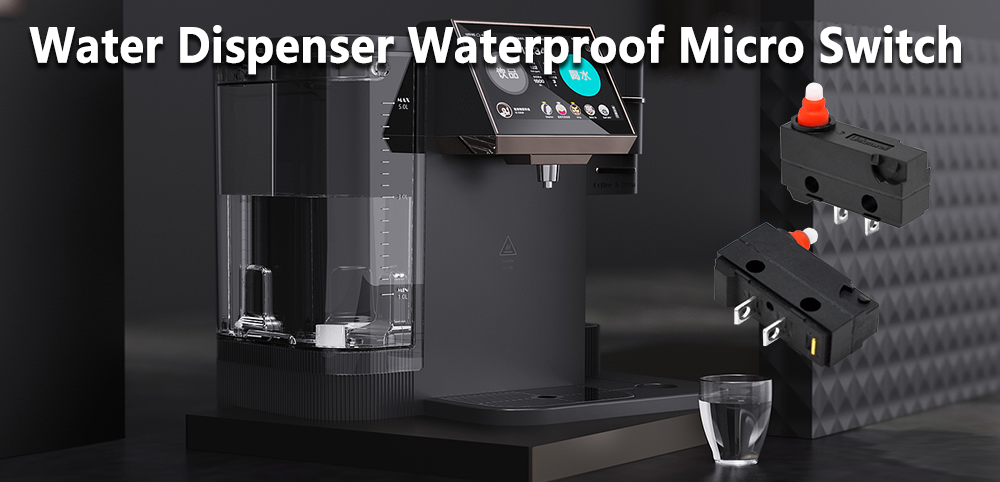Working principle of water dispenser waterproof micro switch
Water dispenser waterproof micro switch usually refers to a waterproof micro switch, which is used to control the water flow or other related functions of the water dispenser. A waterproof microswitch is an electrical switch whose operation is triggered by a small lever (also called an arm or tooth), usually with a small movement of the trigger point.
In water dispensers, waterproof micro switches may be designed to detect the placement of a water cup, the opening and closing of a faucet, or other functions that require precise control. This kind of switch is usually installed inside or at the bottom of the water dispenser so that it is triggered when the user performs the corresponding operation.
The working principle of the water dispenser waterproof micro switch basically follows the general principle of the waterproof micro switch. A waterproof micro switch is a mechanical switch whose operation is based on tiny movements of a joystick. The triggering mechanism of the waterproof micro switch is accomplished by the movement of a joystick. When the joystick is triggered by an external force or mechanical device, it produces a small displacement. There are one or more pairs of contacts inside the waterproof micro switch, usually metal sheets. The contacts are separate in the unactuated state. When the joystick is displaced, the contacts are pushed or attracted, causing them to close or open. When the contacts of the waterproof micro switch are closed, the circuit is energized; when the contacts are opened, the circuit is interrupted. This process can be used to control the switching operation of electrical equipment.

Water flow control in water dispenser
In water dispensers, flow control is usually achieved through a combination of one or more sensors and actuators. Waterproof microswitches are one of the elements that may be used for water flow control, but there are other technologies and components that can be used to achieve more complex water flow control. One sensor commonly used in water dispensers is the flow sensor. Flow sensors can detect the flow rate and amount of water and provide corresponding information to the control system. By monitoring the flow rate, the water dispenser can adjust the water flow in real time to ensure that the water flow rate expected by the user is achieved.
Infrared sensors can be used to detect the user’s action of placing a cup of water under the faucet. When a user approaches the faucet, an infrared sensor detects the user’s presence and triggers water flow. A pressure sensor can be used to detect the user’s press on the faucet. When the user presses the faucet, the pressure sensor senses the change in pressure and triggers water flow.
One way to control water flow is with a solenoid valve. The solenoid valve can be opened or closed according to the signal from the control system, thereby regulating the start and end of the water flow. The waterproof micro switch can also be used to detect the placement of a water cup or other actions to trigger the start or stop of water flow.
Temperature control in water dispenser
Achieving temperature control in a water dispenser usually requires a set of sensors, heating or cooling elements, and a control system. A sensor for measuring the temperature of the water is placed inside the water dispenser. This could be a temperature sensor such as a thermistor or thermistor, or an infrared sensor, etc. Water dispensers are often equipped with a control system that monitors information provided by a temperature sensor. This control system can be a microcontroller, microcontroller or other similar electronic control unit.
Water dispensers may be equipped with a heating or cooling element to adjust the temperature of the water. The heating element can be a heating appliance, and the cooling element can be a refrigerant or a refrigerator. The control system controls the operation of the heating or cooling element by comparing the difference between the actual water temperature and a set target temperature. This is usually accomplished through a feedback loop, ensuring that the water temperature remains within the user’s desired range.
When the user selects cold water, the control system detects the current water temperature. If the water temperature is higher than the set cold water temperature threshold, the refrigeration element is activated to cool the water temperature. If the user selects hot water, the same principle applies, but now the heating element is activated, raising the water temperature. Once the water temperature reaches the set target temperature, the corresponding heating or cooling element stops working.
